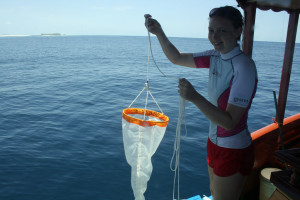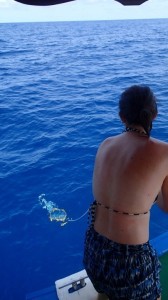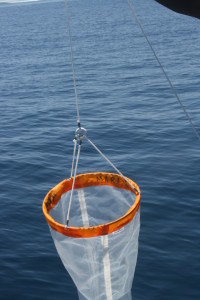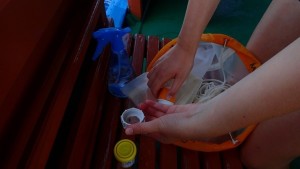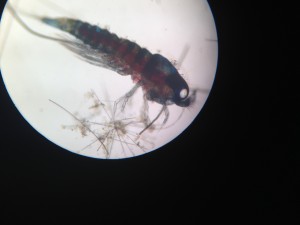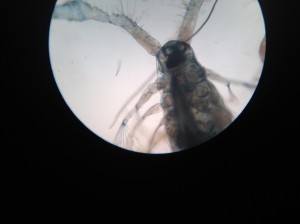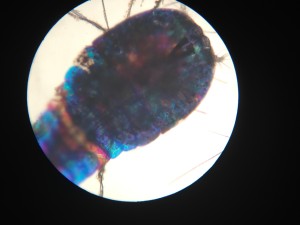Hi I’m Aimée!
I’m from Plymouth University and am halfway through my stay with the MWSRP collecting plankton samples as part of my dissertation project.
This is my third time volunteering with the MWSRP and it’s good to be back! I’ve always had a fascination with sharks and volunteering with the MWSRP has allowed me to observe, in my opinion, one of the most incredible species of shark on the planet in their natural environment.
Some Background
I study Ocean Science at university and in my second year we started to learn more about plankton; the different types and species, what affects their abundance, etc. While it may seem quite boring to the uninitiated, for biologists a lot of the things we’ve learnt are actually quite interesting!
One thing in particular I learnt that some species of plankton make daily vertical migrations from deep water to the surface to feed on lower trophic level plankton at night. What’s interesting about this is that their photoreceptors, which make them sensitive to light, prevent them from reaching the surface waters when it’s full moon due to the corresponding increase in light intensity at night. Their photoreceptors enable them to tell when the sun is beginning to rise so that they can sink back down to depth to hide from predators during the day. Thinking this through, I wondered if these higher tropic level plankton aren’t able to feed on the lower level trophic plankton at the surface at night when it’s full moon, would there be a more plankton in the water in the days following the full moon? And as such, maybe more whale sharks would be attracted to the area too? I contacted Richard from the MWSRP and put forward my thesis and after much preparation and planning here I am!
I decided to stay for the duration of a lunar cycle to see how the number of shark encounters and plankton abundance changes throughout the month.
Methods
I managed to loan a plankton net from my uni. After each whale shark encounter I lower the plankton net from the back of the dhoni, let it sink to 3m and after 1 minute slowly bring the net back up. I then spray the outside of the net with seawater to ensure as much plankton as possible collects in the filter at the bottom of the net. I unscrew this filter from the net and place it over a sample pot and spray the plankton into the sample pot. I note down whether the shark we saw was feeding and on the label of the sample, I write the time and location of where each sample was collected.
I also collect control plankton samples outside Lux Resort and Maamigilli. Whilst it’s really good to see up close what’s in the water, when we see a lot of sharks the plankton analysis can take a really long time!
When we get back to Dhigurah, I head off to Dhigurah School where they’ve very kindly let me use their microscope to look at the plankton. For each sample, I pipette 4 drops onto a microscope slide and using the 10x magnification focus on the images of the plankton (I repeat this 3 times for each sample). I then take a picture of the magnified image of the plankton through the eyepiece of the microscope. This took A LOT of time and patience to get right and could be infuriating at times trying to take the camera to focus on the plankton. It’s especially difficult when the plankton are still moving about (I’ve lost count at the number of times I’ve jumped out of my skin when focusing on one species of plankton and another one darts across unexpectedly!).
I have to say it’s been very interesting seeing the array of plankton here; they may be tiny but up close they are pretty spectacular. The most interesting plankton species that I’ve seen so far was bioluminescent, it was multi-coloured and emitted spectacular blue and red light!
The plan is to identify these different species of plankton when I get back to uni with the help of my Project Advisor. Once they’ve been identified I can then see if there’s a pattern in the species of plankton the whale sharks are eating compared to when they’re not and whether the moon phase has an effect on the abundance of this plankton. I’ll share this with MWSRP followers just as soon as it’s done!
Aside from the relentless mosquito bites and dodgy tan-lines, I’ve been having the most incredible time out here and have been lucky enough to see 28 sharks in the past two weeks! I’m looking forward to the next two weeks out here to see some more amazing whale sharks and find more weird and wonderful plankton.
All the best,
Aimee

